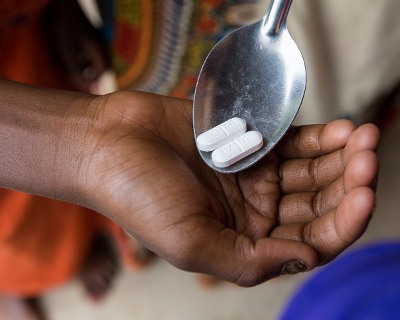Driving Progress: Reflections on World NTD Day
Foundation Support to Help Eliminate NTDs Aims to Create a Brighter Future for Families in Need
More than 1.7 billion people worldwide are affected by neglected tropical diseases (NTDs), a group of parasitic and bacterial infectious diseases that thrive in impoverished communities, including rural regions and conflict zones.1 These diseases – including intestinal worms, lymphatic filariasis, river blindness, schistosomiasis and trachoma – can cause devastating consequences, such as disfigurement, blindness, malnutrition and more than 170,000 deaths each year.2-4 The World Health Organization (WHO) and other government agencies have signaled the need for NTD prevention and control, including the urgent call to end NTDs by 2030 as part of the UN Sustainability Development Goals.2
In response, the Astellas Global Health Foundation has designated the support of NTDs as one of its three focus areas for access to health funding, along with children’s health and mental health. Since its inception in 2018, the Foundation has supported three non-profit organizations – the END Fund, International Medical Corps, and Sightsavers, in their comprehensive efforts to protect people against NTDs, including through education, training and treatment efforts.

Details include:
- The END Fund: In 2021, $400,000 of Astellas Global Health Foundation funding helped the END Fund to reach its goal of delivering more than 47 million preventive chemotherapy treatments to more than 28 million people and training more than 188,000 health workers to distribute NTD treatment in the Democratic Republic of the Congo (DRC), a Central African country faced with one of the highest burdens of NTDs in the world. This followed an initial $750,000 grant from the Foundation to the END Fund in 2019 intended to enable the END Fund to increase programming designed to control and eliminate NTDs in the DRC.
- International Medical Corps: The Astellas Global Health Foundation provided a $300,000 grant in 2021 to support International Medical Corps in its work to improve vector-borne and tropical disease prevention and control in health centers benefitting more than 125,000 lives in Venezuela’s Bolivar state through training, distribution of supplies, deworming campaigns, and community mobilization.
- Sightsavers: The Astellas Global Health Foundation awarded Sightsavers a one-year $536,700 grant in 2022 designed to help reach communities in some of the most underserved areas in Guinea Bissau, reducing the morbidity, mortality, and disability associated with four NTDs. Sightsavers is using mass drug administration (MDA) to deliver more than one million treatments and train more than 9,000 community volunteers and health workers in areas with a combined population of 1.2 million people at risk of NTDs.
The goal for this funding is to help these groups achieve their aforementioned NTD objectives to reach all those who require treatment for these preventable diseases. Success is defined by each program’s ability to make a meaningful impact and actively contribute to the achievement of the UN Sustainable Development Goals, particularly Goal 3: Ensure healthy lives and promote well-being for all at all ages.5
These organizations’ direct approaches to solving the preventable problems associated with NTDs are putting patient health and access to treatment front and center and have been an impactful way to collaborate with world leaders on improving global health access. It is also an important opportunity to underscore the Foundation’s own commitment to help improve Access to Health where it is most urgently needed. The Foundation is proud to fund organizations proactively tackling NTD and other urgent health needs in low- and middle-income populations in highest need as we continue our efforts to help build “One World, a Healthier Tomorrow.”
Learn more about the NTDs and prevention and control efforts by visiting other areas of this website in addition to websites for the END Fund, International Medical Corporation and Sightsavers.
References:
1World Health Organization website. Neglected Tropical Diseases. Accessed on January 5, 2023. Link: https://www.who.int/health-topics/neglected-tropical-diseases#tab=tab_2
2END Fund website. The Problem. Accessed on December 8, 2022. Link:https://www.end.org/
3World Health Organization website. Neglected Tropical Diseases. Accessed on December 8, 2022. Link: https://www.who.int/health-topics/neglected-tropical-diseases#tab=tab_1
4END Fund website. The Impact of Neglected Tropical Diseases. Accessed on December 8, 2022. Link: https://www.end.org/ntds-in-focus/
5United Nations website. Accessed on January 5, 2023. Link: https://sdgs.un.org/goals/goal3
